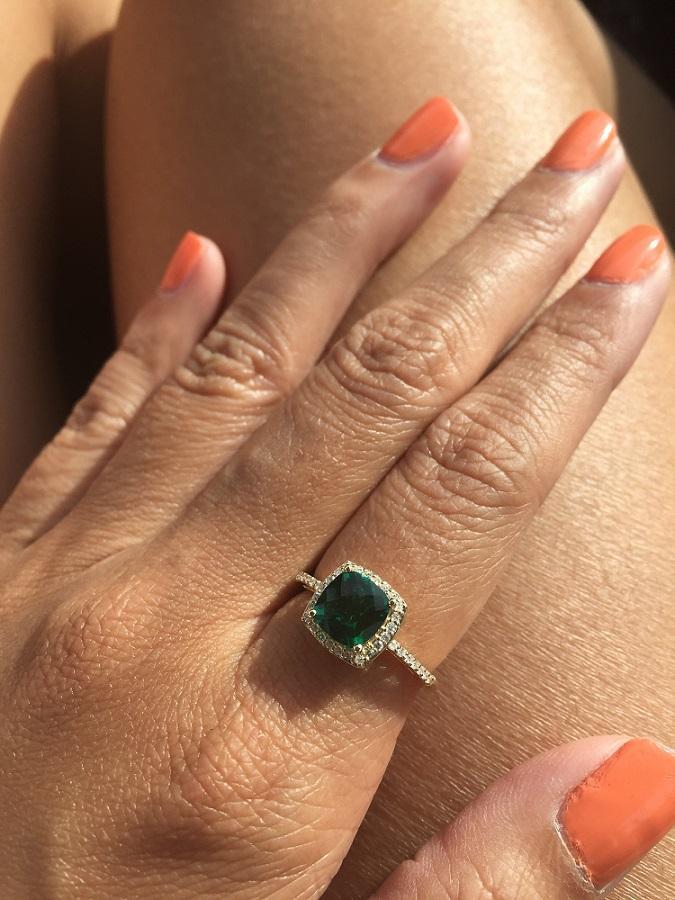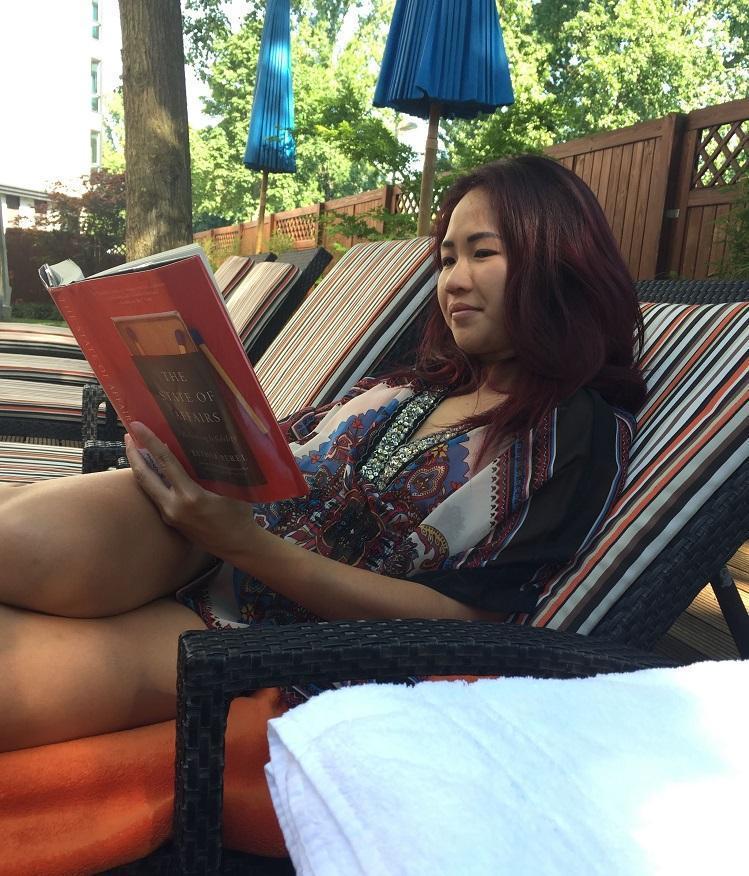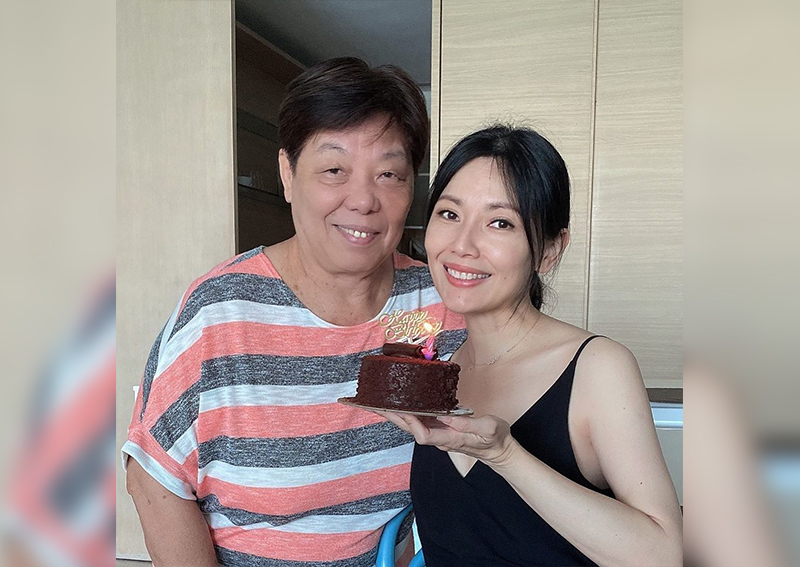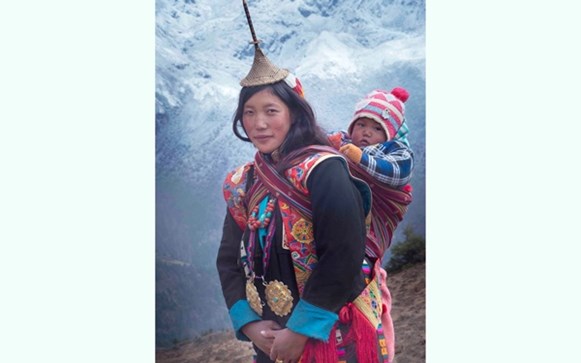
You are reading
On Honesty and Uncertainty: What A Polyamorist Has To Teach Us About Relationships
30-years-old young. Unmarried. One 3-year-old boy.
Works as a content producer in travel and fashion. Dates predominantly Caucasian men.
Talks frankly of having 3 partners—one of them almost 40 years older than her. None are the father of her child.
I’m guessing the first epithet out of your mouth wasn’t a positive one.
As Janice’s story illustrates, sugarcoating your promiscuity is not morally equivalent to calling yourself polyamorous.
Yet none of this bothers Janice Leong, a self-proclaimed polyamorist who uses her social media channels to discuss open relationships. She’s encountered verbal abuse in the past, but these days, her viewers are more curious than antagonistic; less critical and more interested to learn about the ups and downs of her unconventional lifestyle.
To set things straight, Janice educates me on the precise definition of polyamory. It is, as Wikipedia and other resources explain it, “the practice of, or desire for, intimate relationships with more than one partner, with the informed consent of all partners involved.”
More crucially, it is about participating in a non-monogamous relationship in a responsible and ethical manner.
But before getting into all that, how did it happen that Janice, who was brought up in a strict Catholic household by a mother who wanted her daughter to follow the conventional matrimonial route, found herself here? How did she find herself leaping from the stable universe of monogamy into the colourful world of polyamory? And assuming that you are a diehard monogamist, what instructive takeaways can we glean from studying her tumultuous life?
Like many of the life-changing decisions we ourselves might have made, it started with heartbreak.
The First Cut is the Deepest
Her first relationship began at 15-years-old, followed by another when she was in JC.
“It was mainly lots of cuddling without any sex,” she shares.
The next relationship turned out to be her last monogamous one. At 22, she started what would become a 3 year relationship with a partner 19 years older than her. Upon breaking up due to incompatible differences and being cheated on, she felt something was wrong, given this string of romantic failures, and decided to investigate the science of relationships. Her voice chokes as she reveals how her then-boyfriend had cheated on her.
“I really felt like something was wrong with me,” she tells me. “I thought about whether is cheating so natural and what could be done to prevent from feeling hurt. You know I have been cheated on and have cheated. Everyone has come across the impact of cheating once in their lives. And I was looking into how to tone down and buffer that pain.”
“Argh, I don’t like the feeling at all,” she sighs.
This exploration was pivotal to unearthing the world of alternative relationships. For her, Stepping Off the Relationship Escalator by Amy Gahran was an informative and critical resource that facilitated her turning away from society’s ladder of “customs for intimate relationships: monogamy, living together, marriage until death do you part.” The book also explores uncommon relationship choices, from “consensual non monogamy (including polyamory and swinging) to asexuality, pause/play relationships and more.”
Like in the LGBTQ community, there’s an assortment of terms to define one’s relationship style. There’s monogamish (a relationship that is mostly monogamous, but occasionally exceptions are made for sexual play), solo-polyamory (having multiple relationships without a primary partner), or open/closed triads or quads (a polyamorous relationship between 3 or 4 people; can be open or closed to the group).

It’s a dizzyingly entertaining read if you’re interested in the diverse arrangements people have found for themselves. For Janice, she concedes that she lived a promiscuous lifestyle for a brief period after that first heartbreak. This was, to her, needed catharsis. When the novelty of casually dating multiple men wore off, she decided the next step was to draw some limits.
“Cheating is like a disease in the relationship. And the cure or antidote, if you will, is working through a mutually agreed definition of the relationship terms, because everybody is going to define infidelity in different ways.”
It’s been approximately 5 years since that decisive turn. After that chapter of casual dating, she is now in a polyamorous relationship with 3 men. For easy reference, we will refer to them by their preferred monikers, Mr USA, Mr UK, and Mr SG. With two being long-distance and one local, each relationship speaks to a unique lesson on the nature of relationships.
If you think that this story is all about threesomes or sizzling sex with 3 different men, you couldn’t be more wrong. Instead, with two out of three being non-sexual in nature, each relationship fulfills a special role in her life.
The Never-Ending Search for ‘True Love’ (The Case of Mr USA)

Janice in Miami, where she spent time with Mr USA.
Out of the three relationships, Mr USA—of which is the longest running at 4 years—is unfortunately on its last legs. Nevertheless, Janice explains that Mr USA was pivotal in supporting her during the early years of her pregnancy and childbirth. She had met him in Bangkok, where they spent a few “amazing nights together”. She didn’t think that she would see him again when they left for their respective countries.
But after becoming pregnant (with another man), and the father disowning his responsibilities, Mr USA got involved. Himself being a single father to children from 4 previous marriages, he visited Janice in Singapore a few days after her son was born. Through his companionship, she found the strength and resolve to handle the challenges of pregnancy, and he never abated in his kindness and affection for her.
She recalls an endearing incident during her visit to the United States. Asked by the immigration officer about the purpose of her visit, she answered cheekily, “I’m here to tell a boy I love him.” Like a scene out of Notting Hill, she was deeply in love.
Unfortunately, that love did not blossom. Despite being aware of her stance on polyamory and her disinterest in getting married, he proposed to her. Flashing the emerald ring to me, she bemoans the asinine nature of it all.
“He was looking for a monogamous relationship and said we were not serious. But how do you define what is serious? Cohabitation? Does he expect me to stop all my relationships and migrate for him? He asked me, isn’t that enticing enough? But to forsake my relationships like that is very selfish of him. Not to mention he has 4 ex-wives with children from each one. I asked him, what can you do to ensure I won’t be the fifth?”
Puzzled by his persistent efforts to seek marriage at all cost, despite being in his forties with his oldest child at 26-years-old, I ask why.
She replies, “He thinks he hasn’t found the right one.”

The emerald ring that Mr USA proposed to Janice with.
His refusal to accept her polyamorous lifestyle has diminished the quality of their relationship. He has not spoken to her for about a year, and tried recently to rekindle their relationship. She is still visibly enraged at him for not showing her more respect.
“I was really mad at him for texting Happy New Year after one year of not speaking. To cut me off and act as if nothing happened shows how much he treats our relationship. And to demand for marriage even now! We communicated and tried to meet in the middle but he can’t accept my free-spirited character. That’s the thing about relationships; you have to have a consensus about what the relationship is about. Nothing kills a relationship like the change of ideals and character.”
Change is the only constant in life, as they say. Yet it appears some people don’t change, as evident with Mr USA’s unending search for ‘the right one’. Wouldn’t it be far more reasonable to confront the truth of whether you are marriage-worthy material in the first place?
Divorce is now increasingly common, but the stigma of being a divorcee persists because—consciously or not—it suggests a moral failure on the individual’s part. After all, shouldn’t the vows uttered ceremonially, combined with the extravagant wedding bonanza, count for something? True love should conquer all, we believe. Whether it manifests in marriage or not, we want to believe that our partner’s commitment to us will always be unwavering.
‘Unwavering commitment’ is a beautiful ideal, yet a philosophical unknown. How much financial instability can a spouse take? How much physical and mental illness can be tolerated before it adversely affects the quality of life for the other partner? Putting aside these extreme contingencies, couples have split over far more trivial reasons, typically citing irreconcilable differences as the go-to cause.
And even before getting to this point, shouldn’t we re-consider the idea that a relationship can only be real if it lasts forever? Isn’t it more important to determine not only how compatible we are, but also whether marriage is necessarily the most sensible arrangement simply because two people want to be together?
Staying Honest Is About Constant Communication (The Case of Mr UK)
If there is one thing that we often use to benchmark the intensity of a romantic relationship, it’s sex. Yet we have a complicated relationship with it, feeling embarrassed to talk about it openly while simultaneously downplaying its importance when determining the significance of a relationship (“oh, it’s not about the sex”).
In the case of Mr UK (who lives in a nearby Asian country), Janice admits that sex was the main draw. Having met him 4 years ago in Singapore, along with the father of her child (they are acquaintances), their attraction to each other can only be described as electrifying. After getting to know each other, she would fly over to see him every few months for weekend trysts involving classy dinners, dizzying romancing, and the obvious.
“It’s always novel every time I meet him. Some people live together for years and it gets bland, but with him, the constant flying and rekindling made every experience fresh. You know, no one needs to give instructions like “damn it, do this!” Sexual compatibility is a big foundation. It’s been more than 3 years but there’s still a strong romantic attraction. It’s a state of mind.”
That state of mind, I learn, is called limerence, which results from “a romantic attraction to another person and typically includes obsessive thoughts and fantasies and a desire to form or maintain a relationship with the object of love and have one’s feelings reciprocated”.
Perhaps this is a more apt explanation for “love at first sight”.

Janice has a knack for changing her hairstyles.
These days, a pre-requisite of modern relationships is that good sex should exist. When friends are in a relationship that’s on the verge of ending, we often ask, “How’s the sex?” If an affair occurs, we condemn the one who strays as weak or flawed, and talk about how the one who was betrayed deserves someone better. Infidelity shatters reality for those who have a wholesale belief in the sanctity of monogamy.
But as Kate Figes wrote, “a close loving relationship ought to be the one place where we can be flawed and still feel loved”. To expect True Love to work its magic is a failure of our moral imagination to see ourselves as complex beings with contradictory needs, desires, vulnerabilities, and flaws.
Janice had interrogated her UK lover who was married: “How much does your wife really know you?” Should he have gotten married in the first place if he knew himself to be a profligate lover?
Was getting married an attempt on his part to tame his inner hedonism and aspire to something better? Did he need to dip knee—and soul—into the unexplored waters of marriage to test his resolve?
From one-night stands to emotional affairs involving chatting intimately with a co-worker, cheating can be ubiquitous and pervasive depending on how we define it and what we can tolerate. All the more crucial is communicating with our partners clearly and distinctly about our boundaries and levels of trust.
In this sense, it could be argued that polyamory allows for a wider range of freedoms, although, as the relationship between Janice and Mr UK illustrates, it also leads to messier conversations about how much you know yourself or your partner.
This project of communicating with oneself and to your partner is an eternal one, for we are constantly evolving as individuals. A one-night stand could be a mere slip-up, not indicative of a person’s character overall. What matters is how we navigate these mistakes, and whether we aspire to becoming more genuine individuals and lovers.

Pre-COVID, Janice travelled frequently for work.
Today, Mr UK is no longer married. Likewise, sex has changed for Janice.
“Sex, to me, means something different than before. I like to describe it as an emotional chastity belt. I’m not forcing myself to be sexual but I’m demisexual meaning I need to form an emotional bond before having sex. I grew out of that phase where we go on dates and meet new people. Now I don’t end up naked in bed all the time.”
She alludes to how some men have labeled themselves “polyamorous” just to give themselves permission to sleep around. But applying a label doesn’t absolve anyone of remaining accountable to their loved ones. As Janice’s story illustrates, sugarcoating your promiscuity is not morally equivalent to calling yourself polyamorous.
Ubiquitous Jealousy (The Case of Mr SG)
Out of all these relationships, the most surprising one might be with the local fellow, Mr SG. Significantly older than Janice, she recognises that they are an odd couple, earning looks from passersby when they hold hands and hug in public. Aside from these little displays of affection, their relationship is strictly non-sexual.
This does not prevent him from getting jealous of her other partners, particularly Mr UK. Janice laughs and elaborates, “Don’t think that because he is way older, he would not get jealous. He can be sarcastic and tell me things like don’t see him, you may catch Covid-19, or don’t come back pregnant.”

Janice reading 'The State of Affairs: Rethinking Infidelity' by Esther Perel
Janice isn’t spared from jealousy either. Self-assured as she is when it comes to her identity and desires, she can’t deny feeling jealous when she hears the sordid details of Mr UK’s sexcapades. I’ve teased her about it since it clearly demonstrates that honest communication is no panacea to one’s emotional vulnerabilities.
She concedes that deep down, she needs to know the sex they have is special. Janice acknowledges, “It’s the classic catch 22 situation. Ask or don’t ask, either way, it can backfire and I end up feeling insecure.”
Janice’s relationship with Mr SG strikes me as the sort of affection that develops commonly between a teacher and student. She sings praises of him guiding her in matters of business and life.
That said, Mr SG is married and Janice is deadly cautious about overstepping her boundaries. Fundamentally, it is a non-platonic relationship regardless of its non-sexual framing. Living between two realities—Mr SG with Janice and Mr SG with his wife—there is natural cause for any party to feel insecure about not being able to provide completely for their partner. Jealousy, hence, becomes the price for managing the competing needs of two different selves.
Still, given the long stretch of not seeing Mr UK in person, along with the possibility of Mr SG leaving the country in a few years, Janice has shaken off some of the jealousy. She admits that it’s been several months since she’s had sex, and she’s learned to tame her expectations of everyone in her life. Simply put, the cure to jealousy is to lower your expectations.
“I find it safer to go to a relationship with expectations as if it’s a night stand otherwise you’d be sad and disappointed. Sure, things can blossom as it did with Mr UK but things can change again, like the person may leave the country or find someone new. Don’t drown someone in your expectations because you can kill a relationship that way.”
Uncertainty and New Possibilities
Turning 30 this year, Janice has braced herself for more changes to come. While the future is uncertain, some things like non monogamy have become a cornerstone of her identity.
“It’s very easy to return to monogamy, but it’s not worth it. I had to unlearn or recondition myself in my beliefs and values; it’s literally reprogramming my mind.”
As of now, she’s open to new partners. In fact, two new people have recently entered her life. One, whom we shall dub Mr. Sweden, is asexual. Despite him having no interest in sex, he has a intrinsic need for physical intimacy, as evidenced from their first meeting at a ‘Coffee & Hugs’ event last year. Since then, they have traveled and spent weekends together like a regular family.
Recently, Mr Sweden found a new romantic interest, which has led to Janice educating me again on another new term: compersion. That is the “joy associated with seeing one’s partner have a joyful sexual or romantic relation with another”.
She describes in detail their respective love languages, how he thrives on physical touch whereas she is smitten with acts of service, demonstrating how intimate they have become.
Compersion might sound as bizarre as an alien language, but one might compare it to feeling joy at seeing an ex-lover find a new lover. As Sting once sang, “If you love them, set them free.”
And this is how Mr Sweden reciprocated Janice’s feelings of compersion: when they were at Tanjong Beach Club, an interested stranger chatted her up, and Mr Sweden gave his blessings for her to fraternize with him.
She dubs this other person Mr Comet because it describes “a person that passes through your life repeatedly who is intense and awesome, and when gone you are still in contact with that person in some way, but they are not a continuous partner.” Even though they haven’t so much as gone on a date, they retain a regular schedule of chatting online, with the promise that when times are better, she will accede to the dinner date he’s been asking for.

Janice as she currently is, taking things in stride.
On a Different Path, Still the Same Milestones
In telling Janice’s story, I’m acutely aware of the risk that accompanies the public sharing of a person’s sexual history and psyche. Some can appreciate that finding love is a messy affair, and that we are all entitled to pursue it idiosyncratically. On the other hand, there are those who will leave with a one-dimensional opinion of Janice, dismissing her as hopelessly delusional or starved of meaningful love and sex.
Sexuality is not food, but analogous to tasting a novel dish, how are we to really know our proclivities and preferences without dabbling in it? As instructive as Janice’s story has been for her (and hopefully for you to read), let me contrast it with the story of Neil Strauss—the infamous author of The Game, the eponymous ‘guidebook for picking up chicks’.
Finding himself incapable of committing to a meaningful relationship, he attempted to adopt polyamory into his life, with entertaining and uncomfortable results. But unlike Janice though, Strauss found polyamory disagreeable, and settled for a monogamous relationship, and is now happily married.
Concluding his thoughts on relationships, he writes, “[O]ur commitment today is to neither monogamy nor non-monogamy. Those are other people’s values and dichotomies. Our commitment is solely to nurturing, supporting, and honoring three important entities in our lives: me, her, and the relationship. Whatever it takes and however we may change.”
In response to his wife’s astonishment at how much he had changed, Strauss realised, “In the end, love is not finding the right person. It’s about becoming the right person.”
Ultimately, no matter what you read about human sexuality (and I have read plenty), whether we are biologically predisposed or socially conditioned to be monogamous or polyamorous, we are all sexual omnivores. There is no natural way to be in a relationship because our instincts for freedom, self-determination, and searching for meaning—for better or worse—afford us myriad ways to relate to one another.
And why should the search for a romantic partner(s) be the sole determinant of our values and self-worth? Sharing her plans to celebrate her 30th birthday by visiting a child orphanage in Jakarta with her son, Janice explains how she has grown out of clubbing and meeting men for kicks.

Janice with her son.
These days, I find her more buoyant when she speaks about her son’s judo and swimming classes. While all that talk about the vicissitudes of lovers, romance, and sex makes for salacious gossip, judging by her passion, it’s clear her heart is completely invested into the well-being of her son. (Lest you raise concerns about the well-being of children living in polyamorous household, here’s evidence showing otherwise.)
She’s also open to having a second child, but is committed to looking for the right father, and is even considering the sperm bank. The father of her son (dubbed Mr. C as an online alias) hasn’t paid child maintenance all these years, leading to a contentious long-drawn legal battle in Hong Kong (where he currently lives).
No matter who we partner with in life, they can all come and go. I have seen couples divorce after a long marriage, middle-aged men in a constant merry-go-round dating young women, and married folks engaged in extra-marital affairs. Loving someone remains, because it isn’t written in nature that anyone belongs to us forever.
Marriage is a beautiful ideal. Despite the concept of marrying for love being relatively modern, we are all the better for normalising the incomparable freedom to autonomously pursue our hearts’ desire. Janice recognises this, and advises accordingly, “Even if you choose monogamy and marriage, do it on your own terms. Don’t get caught up with only the blissful moments. Take into consideration even the most mundane of issues like sleeping on the same bed because the slightest difference can amplify over time.”
So when someone comes your way, be sure to love honestly and with all your heart.
No matter how you choose to arrange it.
Have an unconventional relationship story to share? Write to us at [email protected].
If you haven’t already, follow RICE on Instagram, Spotify, Facebook, and Telegram.
Author
Douglas Oh
Staff writer


















